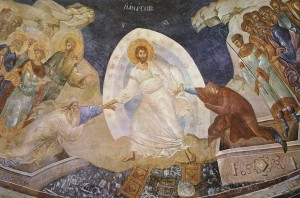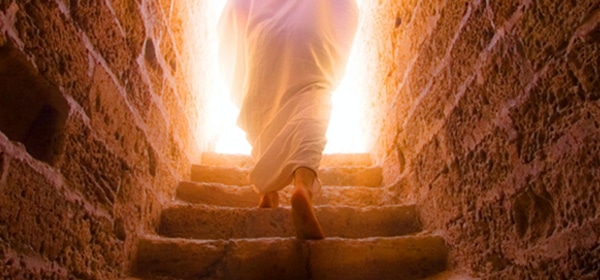Why A Wednesday Crucifixion Doesn’t Work
(Which is why the Church always kept it, and continues to yet today, as Scripture teaches, Friday to Sunday.)
For the folks who want to argue for a Wednesday crucifixion, I want to share the answers up-front as to why that’s not an option and therefore why we teach the Friday-Sunday Crucifixion to Resurrection sequence.
First off, the spring feast of Passover and Unleavened Bread includes its first three days as consecutive days. Specifically, Passover is on the 14th, the High Holy Day of the Feast of Unleavened Bread is on the 15th, and the Feast of FirstFruits is on the 16th. That’s three consecutive days. Anything but a Friday to Sunday Crucifixion to Resurrection Sequence fails to follow this core requirement (and it has to be Friday to Sunday because it was on the first day of the week, Sunday, that Christ arose).
This sequence of days is found in Leviticus 23:5-11 NKJV:
5 “On the fourteenth day of the first month at twilight is the Lord’s Passover. 6 And on the fifteenth day of the same month is the Feast of Unleavened Bread to the Lord; seven days you must eat unleavened bread. 7 On the first day you shall have a holy convocation; you shall do no customary work on it. 8 But you shall offer an offering made by fire to the Lord for seven days. The seventh day shall be a holy convocation; you shall do no customary work on it.’” 9 And the Lord spoke to Moses, saying, 10 “Speak to the children of Israel, and say to them: ‘When you come into the land which I give to you, and reap its harvest, then you shall bring a sheaf of the firstfruits of your harvest to the priest. 11 He shall wave the sheaf before the Lord, to be accepted on your behalf; on the day after the Sabbath the priest shall wave it.'”
Now for those of you who want to argue that “the day after the sabbath” doesn’t necessarily mean the 16th, but instead it could be any day within the 7 days of the Feast of Unleavened Bread, depending on when the Saturday sabbath falls within that week of each given year, consider this: The 15th, the first day of the Feast of Unleavened Bread, WAS a sabbath to the Lord (Leviticus 23:7), so when verse 11 says to “wave the sheaf” before the Lord, that is, celebrate the Feast of Firstfruits, it says to do it “on the day after the Sabbath”. The sabbath just spoken of in verse 7 of Leviticus 23. The sabbath that is the High Holy Day and the first day of the Feast of Unleavened Bread.
You confuse yourself if you think that the “sabbath” spoken of actually means the regular Saturday Sabbath, and not the Sabbath of the 15th which is the High Holy Day of the Feast of Unleavened Bread.
Now, if you want to contest this, you can do so all you want, but the Jewish historian, Josephus, who lived in the first century, wrote the following very specifically about the date the Jews kept the Feast of Firstfruits according to their understanding of Scripture and Leviticas 23:
“But on the second day of unleavened bread, which is the sixteenth day of the month, they first partake of the fruits of the earth, for before that day they do not touch them” (Antiquities of the Jews 3.10.15)
So you see, it is three consecutive days, the 14th, 15th, and 16th, that is taught in Scripture, specifically in Leviticus 23:5-11. And this is how it was understood and applied by the Israelites in the Old Testament. This being the case, ONLY a Friday through Sunday Crucifixion to Resurrection Sequence (remember the resurrection was on “the first day of the week”, or Sunday) fulfills this requirement.

That said, if you’re infatuated with the verse in Matthew 12:40, to the detriment of the three consecutive days and the rest of the verses in the Bible that discuss the Crucifixion to Resurrection sequence, the following is also instructive as to why we teach the Friday-Sunday sequence:
Let’s start like this…
In dealing with folks who want to insist that because of Matthew 12:40 the Crucifixion to Resurrection sequence MUST include three full 24 hour days, one need but point out the concept of “inclusive reckoning.” And the fact that without using inclusive reckoning, one turns 17 Bible verses into lies (while also ignoring the 3 consecutive days requirement).
Now by definition, inclusive reckoning simply means that any part of a day is counted as a whole day. Also important to note, is that inclusive reckoning is the mode of speaking and calculating days most prevalent throughout Scripture.
So, when using inclusive reckoning, one harmonizes all 18 verses dealing with Christ’s time in the infernal regions and perfectly fulfills the requirements of three consecutive days as taught in the Old Testament regarding Passover being on the 14th, the first day of the Feast of Unleavened Bread being on the 15th, and the Feast of FirstFruits or the Wave Sheaf Offering being on the 16th.
Here’s some detail on Matthew 12:40 and the other 17 references:
Matthew 12:40 (NKJV) “For as Jonah was three days and three nights in the belly of the great fish, so will the Son of Man be three days and three nights in the heart of the earth.”
Only once, in Mathew 12:40, does the Bible record Jesus as saying that He would be resurrected after “three days and three nights.” So the cry goes out, “If this is not literally true, then Jesus is a liar! Absolutely no other explanation can be accepted!”
However, Matthew alone subsequently records SEVEN TIMES that Jesus’ words can only be reconciled by using inclusive reckoning. Seven times we see Him saying that He would be resurrected “in three days” (26:61; 27:40), “after three days” (27:63), and “the third day” (16:21; 17:23; 20:19; 27:64). Why, why, why do not these same people cry out saying the same words about these texts? — “If these are not literally true, then Jesus is a liar”???
When Mark, Luke, and John are added to Matthew’s list, a total of 17 (SEVENTEEN) statements of Jesus read “in three days”, “after three days”, and/ or “the third day”. That’s a ratio of 17:1.
Now look, we have to realize that every word in Scripture is inspired. Not just Matthew 12:40. That being said, wouldn’t it make more sense to reconcile all 18 references found in Scripture using the scriptural notion of inclusive reckoning, rather than insisting on Matthew 12:40 being “72 literal hours” and by such action teach that the other 17 quotations of Jesus are wrong?

In summary, because of the requirement of 3 consecutive days, and how inclusive reckoning reconciles all 18 verses dealing with Christ’s timing of the crucifixion to resurrection sequence, Friday to Sunday is the right teaching.
It is, as well, the reason the common teaching of the church for 2000 years has been Friday to Sunday.
Friday to Sunday is not kept because of some evil plot of men, but, instead, because it is in keeping with the ways and means in which Scripture teaches the sequence of events and the nature of the three consecutive days.
So, here, with the Essential Spiritual Fitness Program, we believe this is the teaching that best represents what we find in Scripture. And so it is that we teach this in our Program.
***
You can get started working my Essential Spiritual Fitness Program by subscribing to the Making-It-Real service by clicking the following link:
https://spiritualfitnessprogram.com/membership/makingitreal/
You can further your growth using my Essential Spiritual Fitness Program by enrolling in my Faith-Without-Confusion Online Course by clicking the following link:
***
God Bless!
Coach Paul
‘Feel, Do, and Be Better!‘

